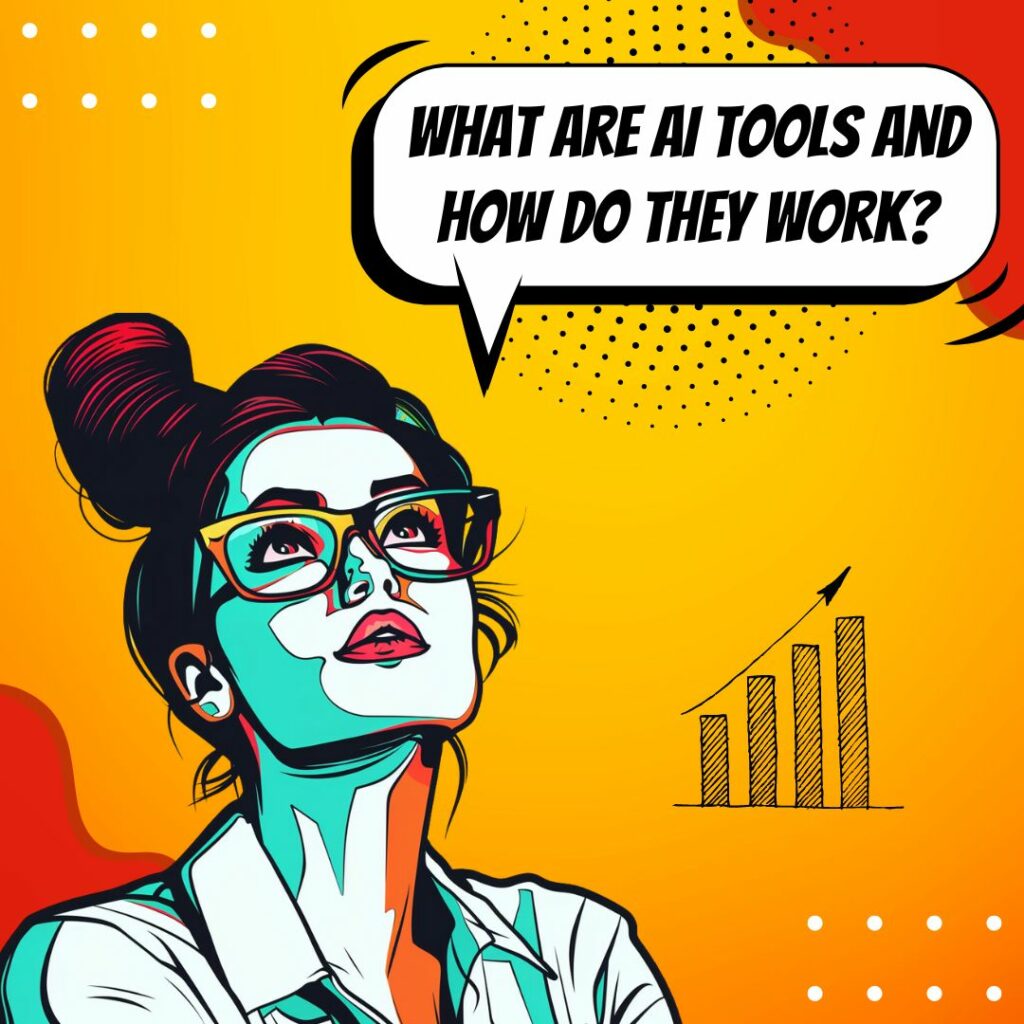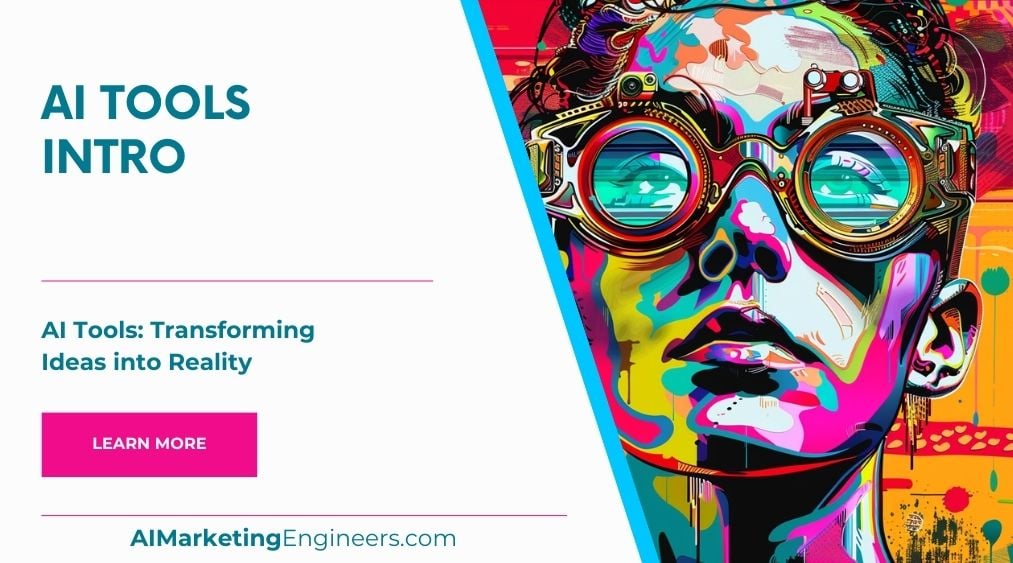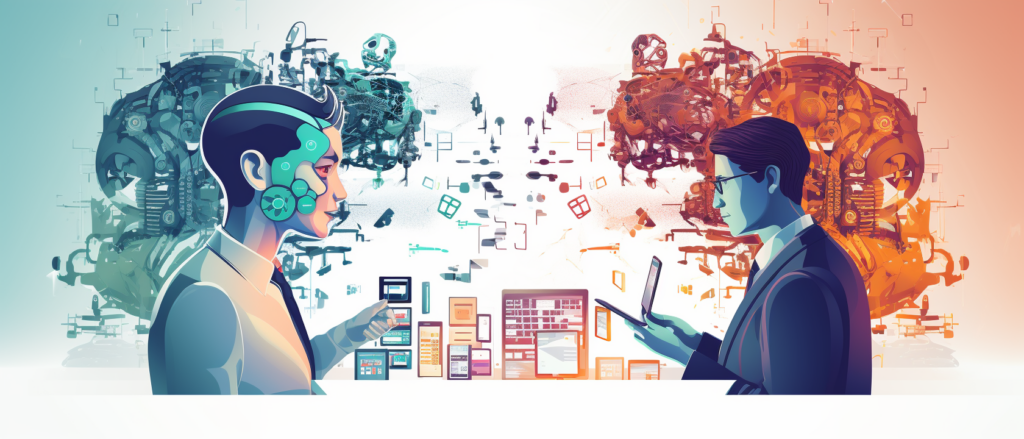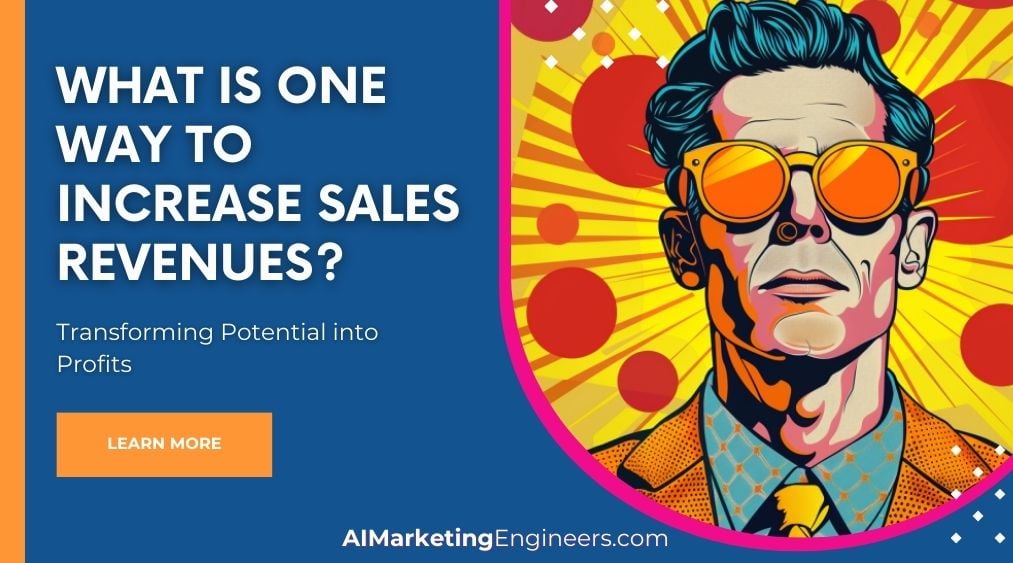Key Takeaways
✅ Understanding AI Tools: Dissecting artificial intelligence (AI) tools reveals systems capable of mimicking human intelligence. Employing algorithms and computational techniques, these tools adapt and excel over time, enhancing task execution.
✅ AI Tools in Action: AI’s scope is broad, with tools transforming sectors as diverse as healthcare and e-commerce. From chatbots enhancing customer service to predictive analytics shaping strategic decisions, AI is the catalyst for smarter business.
✅ Navigating AI Progress and Pitfalls: As AI tools evolve, their growth brings forth brilliant innovations and sober realities. Traversing ethical landscapes and mitigating job disruptions are as pivotal as harnessing AI’s power responsibly.

Introduction
Are you tired of the mundane grind, looking to propel your workflow light years ahead? AI tools offer an unparalleled edge in today’s breakneck business environment. Unlocking the potential of these tools can mean the difference between staying afloat and surging ahead of the competition. This article introduces the transformative AI tools – invaluable assistants poised to enhance every facet of productivity and decision-making.
From the curation of advanced machine learning algorithms to the wonders of predictive analytics, these AI tools are not just futuristic add-ons but essential instruments in writing the success stories of tomorrow’s enterprises. By exploring types, uses, and challenges, we position you at the cusp of a tidal wave of digital transformation.
We promise more than just overviews; we’re here to unravel actionable insights and groundbreaking strategies that harness AI for maximum ROI. Take this journey with us as we demystify AI tools and chart a course toward innovation and enhanced profit margins. Step into a future optimized for success – your guide to AI empowerment starts here.
Top Statistics
| Statistics | Insight |
|---|---|
| Global AI Software Market: Projected to reach $62 billion by 2023, growing at a CAGR of 25% from 2019 to 2023. (Source: MarketsandMarkets Research Report) | The explosive growth signals an era where AI integration is not just an advantage but a requirement for competitive edge. |
| Investments in AI Startups: Reached $74.8 billion globally in 2020, a 30% increase compared to 2019. (Source: PwC Global Artificial Intelligence Study) | This financial commitment indicates a profound belief in AI’s role as a transformative entity in modern commerce. |
| Organization Adoption: Approximately 37% of organizations worldwide are using AI technologies as of 2021. (Source: Gartner Survey) | A statistic that showcases AI’s permeation in the business sphere, marking a shift towards automation and data-driven decision making. |
| AI in SMEs: SMEs accounted for 45% of all AI investments between 2015 and Q1 2021. (Source: Crunchbase News) | This highlights the vigor among SMEs to adopt AI, democratizing innovation beyond large corporations. |
| Top Adopting Industries: High-tech, financial services, and professional services are the top three industries adopting AI. (Source: McKinsey Global Survey) | These industries setting the trend could serve as a blueprint for other sectors on the frontier of AI adoption. |
Types of AI Tools
AI tools are a diverse set of technologies tailored for different tasks. Machine learning algorithms excel at patterns and predictions, while natural language processing (NLP) powers chatbots and language translation services. Computer vision interprets visual content, and predictive analytics forecasts future trends based on existing data. Robotic Process Automation (RPA) streamlines repetitive tasks. Each has its place, as machine learning provides personalized shopping recommendations if you train it using TensorFlow and NLP facilitates real-time customer service interactions.
Benefits of Using AI Tools
The incorporation of AI into business operations unlocks various benefits. It leads to improved accuracy in forecasting, faster data analysis that can sift through enormous data sets in moments, and enhanced customer experiences through personalization. It also brings about impressive cost savings by automating routine tasks and fosters an environment of continual innovation, pushing businesses to evolve and stay ahead in competitive markets.
Challenges in Implementing AI Tools
Despite its promise, harnessing AI is not without its hurdles. Data privacy concerns loom large with the growing scrutiny on how companies handle user information. A lack of technical expertise can restrain businesses from unlocking the full potential of AI technologies. Additionally, the high costs of advanced AI tools can be a barrier for smaller businesses, and there’s an underlying fear of job displacement as automation becomes more prevalent.
Popular AI Tool Examples
The AI tool landscape is rich with innovation. TensorFlow by Google is a powerhouse in machine learning frameworks, allowing for the creation of complex algorithms. IBM Watson stands out for its sophisticated NLP capabilities. Amazon SageMaker accelerates the ability to build and deploy machine learning models at scale. Microsoft Azure Machine Learning Studio simplifies the building, training, and deployment of algorithms. Lastly, Salesforce Einstein integrates AI into the CRM platform enhancing customer insights.
Future of AI Tools
Looking ahead, AI tools are poised for transformative advancements. Deep learning will delve deeper into capabilities that mimic human cognition. The leveraging of edge computing will distribute AI applications more efficiently across networks. Furthermore, the emphasis on responsible AI practices will ensure that AI developments proceed with ethical considerations at the forefront.
Inspirational Quotes
1.” AI is the new electricity“. – Andrew Ng
Andrew Ng sees AI as a groundbreaking force, set to illuminate the future of technology and innovation, much like electricity did in the past. It’s a nudge for e-commerce entrepreneurs to harness AI’s power in optimizing operations and delivering personalized customer experiences. The takeaway? Leverage AI to electrify your e-commerce strategy, and you could light up the market with your brilliance.
2. “The development of full artificial intelligence could spell the end of the human race”. – Stephen Hawking
Stephen Hawking’s words serve as a somber reminder of the gravity of technological progression. For those in e-commerce, it’s a call to balance ambition with ethical considerations. As we integrate AI into our digital storefronts and marketing tools, let’s pioneer with prudence, ensuring our drive for innovation respects human values and sustains our collective future.
3. “We need to ensure that the rise of AI is one that empowers all of humanity and not just some.” – Sundar Pichai
Inclusivity is at the heart of Sundar Pichai’s vision for AI. It embodies a principle that’s fundamental to e-commerce: democratizing access to goods, services, and information. As we create AI-driven platforms, let’s build with an eye for empowerment, crafting systems that uplift every user and consumer. By doing so, we don’t just sell products; we sell possibilities.
AI Marketing Engineers Recommendation
Recommendation 1: Leverage AI for Enhanced Customer Personalization: Utilize AI-powered analytics to deeply understand customer behaviors and preferences. Data indicates a staggering 80% increase in sales for businesses that adopt personalization strategies. Implement AI-driven tools to segment your audience effectively and tailor product recommendations, email marketing, and content delivery to individual consumer profiles. This approach not only delights customers with a bespoke shopping experience but also directly boosts conversion rates and customer loyalty.
Recommendation 2: Implement AI-Driven Predictive Analysis for Inventory Management: Stay ahead of the curve with AI predictive analytics. Current trends show that smart inventory management can reduce holding costs by up to 25%. AI tools provide insights into purchasing patterns, predict demand fluctuations, and optimize stock levels. This strategic deployment prevents stockouts and overstock scenarios, enhancing operational efficiency and ensuring your business can meet consumer demand promptly without excessive inventory overhead.
Recommendation 3: Adopt AI Chatbots for Real-Time Customer Engagement: Integrate AI chatbots into your customer service toolkit. They offer a 24/7 presence, handle up to 80% of routine inquiries without human intervention, and can boost customer satisfaction by providing instant responses. Tools like ManyChat or Drift can seamlessly engage customers, lead them down the sales funnel, provide personalized shopping advice, and gather invaluable consumer insights, all while saving on human resources costs. Embrace these AI conversational agents to elevate your customer service game and increase sales opportunities.
Conclusion
As we stand on the precipice of a new digital era, it’s clear that Artificial Intelligence is much more than a fleeting trend; it’s a transformative force reshaping how we conduct business, engage with customers, and stay competitive. From machine learning algorithms to sophisticated predictive analytics, the range of AI tools at our disposal is revolutionizing productivity and decision-making across industries. By embracing these technologies, businesses can unlock a wealth of benefits, such as heightened accuracy, significant cost reductions, and unprecedented levels of innovation.
Yet, with great power comes great responsibility. The challenges of data privacy, the need for technical expertise, and the existential concerns surrounding job displacement call for a thoughtful approach to AI tool integration. By navigating these waters with diligence and foresight, businesses can reap the rewards of AI while upholding ethical standards and fostering a culture of continuous learning.
The likes of TensorFlow, IBM Watson, and Salesforce Einstein are just the tip of the iceberg, highlighting AI’s vast potential for empowerment. As we gaze into the future brimming with advancements like deep learning and edge computing, one thing is certain: the potential of AI tools is only just beginning to be tapped. Now is the time to explore, experiment, and embrace the possibilities of AI. By harnessing the full spectrum of these innovative tools, we can not only drive business growth but also pave the way for a smarter, more efficient world. Let this introduction be the catalyst for your journey into the world of AI — a journey that promises to redefine what’s possible in e-commerce and beyond.
FAQs
Question 1: What are AI tools?
Answer: AI (Artificial Intelligence) tools refer to software applications or systems designed to mimic human intelligence in performing tasks such as learning, problem-solving, decision-making, and language understanding. These tools utilize machine learning algorithms, deep learning models, and natural language processing techniques.
Question 2: How do AI tools work?
Answer: AI tools use data to train and improve their performance over time. They learn from patterns and correlations within the data by adjusting parameters and weights in complex mathematical models. This process is known as training, which helps these tools make predictions, classify objects, generate text, and more.
Question 3: What are some common types of AI tools?
Answer: Some popular AI tool categories include chatbots, virtual assistants, image recognition software, speech recognition tools, predictive analytics platforms, recommendation engines, and natural language generation tools. Each type serves different purposes and can be applied across various industries.
Question 4: Can AI tools replace humans entirely?
Answer: While AI tools can automate many routine tasks, they cannot fully replace humans due to their lack of creativity, emotional intelligence, and critical thinking skills. Instead, AI tools often complement human capabilities, enabling people to focus on higher-level tasks while machines handle repetitive or computationally intensive ones.
Question 5: Are there any ethical concerns surrounding AI tools?
Answer: Yes, several ethical issues surround AI tools, including privacy violation, bias and discrimination, job displacement, accountability, and transparency. It’s essential to develop responsible AI practices and regulations to address these concerns and ensure the technology benefits society fairly and equitably.
Question 6: How can I start using AI tools?
Answer: To begin using AI tools, you can explore open-source libraries and platforms, such as TensorFlow, PyTorch, and scikit-learn, which offer pre-built models and algorithms. Alternatively, you can leverage cloud-based AI services from providers like Amazon, Google, and Microsoft, which offer easy-to-use APIs and pre-trained models.
Question 7: What skills do I need to work with AI tools?
Answer: To work with AI tools effectively, you should have a strong foundation in mathematics, statistics, and computer science, including proficiency in programming languages like Python, R, or Java. Familiarity with machine learning algorithms, data analysis techniques, and software engineering principles is also beneficial.
Question 8: How can AI tools be used in various industries?
Answer: AI tools can be applied across diverse industries, including healthcare (diagnosis and treatment), finance (fraud detection and investment analysis), retail (personalized recommendations and inventory management), transportation (self-driving cars and traffic optimization), and manufacturing (predictive maintenance and supply chain optimization).
Question 9: What are some popular AI tools for beginners?
Answer: For beginners, popular AI tools include TensorFlow Playground, Google’s Teachable Machine, IBM Watson Studio, and Microsoft Azure’s Machine Learning Studio. These tools offer user-friendly interfaces and pre-built models, allowing you to experiment with AI concepts without extensive programming or data science knowledge.
Question 10: How do I stay updated on the latest AI tools and advancements?
Answer: To stay updated on the latest AI tools and advancements, you can follow industry publications, such as MIT Technology Review, VentureBeat, and Towards Data Science. Additionally, attending AI conferences, joining online communities, and subscribing to newsletters from leading AI organizations can help you stay informed.
Academic References
- Russell, S., & Norvig, P. (2009). Artificial Intelligence: A Modern Approach (3rd ed.). Prentice Hall. This comprehensive textbook provides an in-depth exploration of foundational AI principles, techniques, and their practical applications, serving as an essential resource for beginners and experts alike in the field of artificial intelligence.
- Emeakaroha, V. C., Fatema, K., van der Werff, L., & Healy, P. D. (Eds.). (2018). Handbook of Research on Machine Learning Applications and Trends: Algorithms, Methods, and Techniques. IGI Global. A compilation of research focused on the breadth of machine learning applications, detailing current trends and methodologies in an array of industries, with an interdisciplinary approach to implementation challenges and solutions.
- Goodfellow, I., Bengio, Y., & Courville, A. (2016). Deep Learning. The MIT Press. This book is a definitive resource on deep learning, delving into complex neural network architectures and their implications for fields such as computer vision and natural language processing, making it an invaluable resource for understanding modern AI’s capabilities.
- Sutton, R. S., & Barto, A. G. (2018). Reinforcement Learning: An Introduction (2nd ed.). The MIT Press. An authoritative introduction to the field of reinforcement learning, this text presents both the theoretical underpinnings and practical applications, equipping readers with the insight needed to apply these techniques to new problems.
- Russell, S. (2019). Human Compatible: Artificial Intelligence and the Problem of Control. Viking. In this thought-provoking book, Russell discusses the ethical and control challenges posed by AI, providing frameworks to ensure AI systems act in accordance with human values and safety, an essential discourse for the development of future AI systems.












